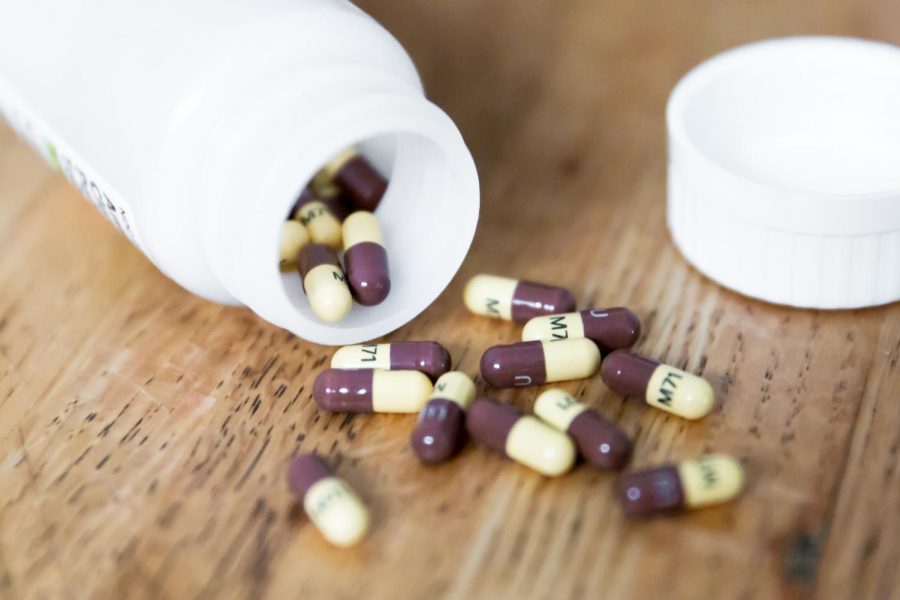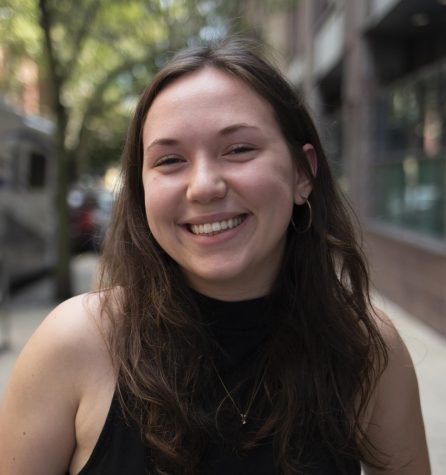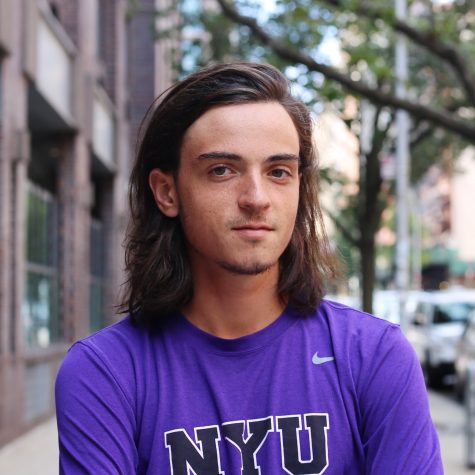University Experts Discuss Opioid Epidemic Struggle and Solutions
The misuse of opioids including prescription drugs has become a serious national epidemic.
April 3, 2018
The opioid epidemic in the United States has made headlines at NYU and across the United States. With death rates from opioid overdose steadily rising — 2016 death rates were 21 percent higher than in 2015 and more than 115 Americans die from opioid overdose every day — the need for better accessibility to treatment and a deeper understanding of causes has never been more paramount.
At the end of February, NYU’s Review and Debates club hosted a discussion about the opioid epidemic, and recently, NYU researchers and students have been exploring the various causes and treatments of this nation-wide issue.
Holly Hagan, co-director of the Center for Drug Use and a professor at NYU’s Rory Meyers College of Nursing, is one of these researchers. Dr. Hagan is using her experience with the HIV epidemic to help lead opioid research after being granted $7.5 million from the Center for Drug Use and HIV/HCV Research in March. In an NYU press release, Dr. Hagan emphasized that one of the primary issues is the misconstruction of untreated pain.
“There was a concern that there was a lot of untreated pain in this country, which was a legitimate concern,” Hagan said. “But there was also a lot of deceptive advertising that really downplayed the abuse potential and risk of addiction.”
Mark Kleinman, professor of Public Policy at NYU and a speaker at the Review and Debates event, said that the loose subscriptions that followed were a catalyst to cheaper, harder drugs.
“Part of what’s happening is that people strung out on [prescription] opioids who run out of a source or money, can easily switch to heroin,” Kleinman said in an interview with WSN. “A [milligram] of illicit heroin in 1979 cost about $2.40, which is about $12 in today’s money. A [milligram] of illicit heroin right now costs about 15 cents to a quarter. So dose for dose, opioids costs about 8 times what heroin costs.”
According to Kleinman, the rise in Oxycodone use was replaced by a rise of heroin use in 2011 due to a reform that made oxycodone less addictive. The rise in opioid abuse that came afterward was not just from heroin use, but also from another opioid called fentanyl. Fentanyl is a schedule 2 synthetic opioid that can be 50 to 100 times more potent than morphine, while heroin is only three times more potent than morphine.
“Fentanyl is a major cause of the rising [opioid abuse],” Kleinman said. “There’s a whole class of Fentanyl compounds, and some of them are astoundingly potent — instead of being 10 times as potent as morphine, they’re 5,000 times as potent as morphine [such as carfentanil]. If someone doesn’t know that the drug he’s taking is heroin, or fentanyl, or carfentanil, they have no judgment of dose.”
Kleinman said that one of the biggest battles moving forward is the lack of enforcement to keep drugs like Fentanyl out of the United States.
“There’s some idiot talking about building a wall, but our Fentanyl doesn’t come from Mexico and if it did, it wouldn’t have to come over a wall,” Kleinman said. “Part of the problem is that everyone wants to use old options: tell kids to say no to drugs, let’s build a wall, let’s have the death penalty for drug dealers. They’re all old and discredited, but none of the new ideas are very good.”
Kleiman insisted that instead of focusing on how to keep drugs out of the country, more emphasis needs to be placed on recovery treatments in the United States, specifically within the criminal justice system.
“The death penalty for drug dealers has nothing to do with recovery,” Kleiman said. “The barriers are that medically assisted treatment of opioid substitution is not as available as it ought to be, particularly for people in the criminal justice systems, who’s diversion programs don’t even allow medically assisted treatment.”
Sally Friedman, legal director at Legal Action Center in New York, echoed this sentiment. Friedman has worked on multiple cases of opioid abuse, most recently two New Yorkers who were told by judges that they had to stop taking prescription Suboxone to treat their addiction. Suboxone, a partial opioid drug, has been praised for its assistance in weening of heroin and opioid addiction with minimal withdrawal systems. With Suboxone, the two people were able to stay in recovery and live regular lives; without it, the chance of relapse heavily increases. Friedman won that case, but many judges will still rule against it because of its partial tie to opioids.
“Some of the biggest roadblocks are a punitive approach to addiction,” Friedman said in a statement to WSN. “This results in over-incarceration, destroyed families and communities, and failure to address the underlying health issues.”
Friedman said that fighting the opioid epidemic is a complex and ever expanding game that involves many players, but college students have a great platform to start.
“We can expand access to treatment, reorient the criminal justice system to a more public health approach to addiction, including providing access to care at every stage of the criminal justice system,” Friedman said. “[Students can] get help if they have or are at risk of substance use disorders, don’t stigmatize people with substance use disorders, vote for elected officials that will do the right thing and advocate for the right policies.”
Email Kristina Hayhurst at [email protected].





























































































































































